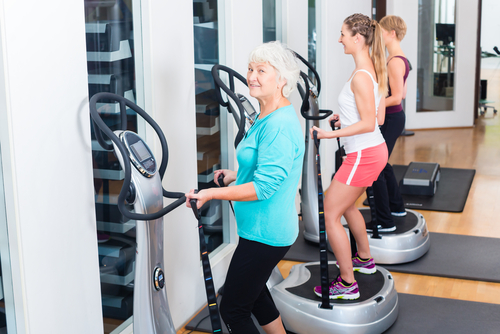Oscillatory Vibration Training Known as SAVT Can Improve Muscle Power in Mitochondrial Disease Patients, Study Shows

Side alternating vibration training (SAVT), which uses a vibrating platform to simulate exercise, can improve muscle power in patients with mitochondrial diseases, according to a study published in Archives of Physiotherapy.
Mitochondrial diseases comprise a group of inherited disorders that changes the way cells in the body produce energy. Without a cure or effective treatments available, people with the disease often experience exercise intolerance, severe muscle weakness, and loss of muscle function, which can progress to decline in walking ability.
Finding ways to improve muscle strength and postural stability may have important implications for the patient’s quality of life.
In the study “Side alternating vibration training in patients with mitochondrial disease: a pilot study” a research team from the University of Calgary in Canada, evaluated the potential of SAVT to improve muscle power in patients with mitochondrial myopathies (muscle disease), who experience muscle weakness.
The study enrolled 13 patients, but only 7 completed at least 80 percent of the scheduled training sessions. The patients were between the ages of 3 and 80 and had been diagnosed with a mitochondrial disease, which included Complex IV deficiency, Complex I and III deficiency, Ragged red fiber disease, Complex I, IV, and V deficiency, SANDO Syndrome (POLG1), MELAS Syndrome, and mtDNA Deletion Syndrome.
The participants were randomized to start SAVT or control treatment for 12 weeks, followed by 12 weeks of a washout period. After this, the participants switched groups and underwent SAVT or control treatment for another 12 weeks.
SAVT treatment consisted of standing on a vibration platform with the feet approximately shoulder-width apart, knees flexed, neck straight, and eyes looking directly forward, for up to 5 minutes (2 min on, 1 min off, and 2 min on), three times a week.
The control treatment consisted of the patient assuming the same position, but standing on a flat floor, for an equivalent amount of time.
During the study period, the patients did not report any adverse effects related to the SAVT. No signs of muscle injury or inflammation were detected, as determined by the normal ranging values of serum creatine kinase and blood lactate.
The patients often reported an exercise-similar sensation in the leg muscles, with some soreness that lasted one day or two.
To measure muscle power, the participants were requested to jump and the generated energy was determined. This evaluation showed that mean muscle power was significantly lower by the end of the control treatment compared with the end of the SAVT treatment.
The results indicate that “SAVT reversed the declines in ambulatory ability,” the researchers stated. They believe that the beneficial effects seen may result from high-frequency muscle activation caused by the high amplitude oscillation of the SAVT platform.
Although the study showed a significant improvement upon 12 weeks of therapy, the effects wear off after cessation of SAVT. Yet, if SAVT is incorporated into a physical exercise program, it can represent an important intervention option to help patients sustain mobility, the researchers said.
“We feel that both clinicians and researchers will find this useful in their assessment of patients and judging response to therapy in patients with these rare diseases,” they added.






